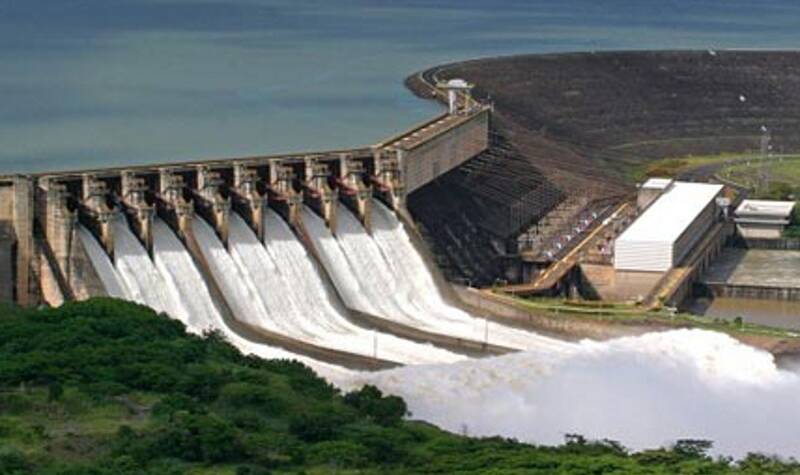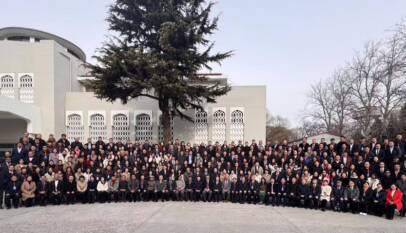Pakistan adopting hydropower to meet energy needs: Syed Qamar Afzal Rizvi
Syed Qamar Afzal Rizvi, a member of the European Consortium for Political Research Standing Group on IR writes that the International Hydropower Association (IHA) has ranked Pakistan on third place, right after China and Brazil for its hydropower capacity. This he says has been because of the country’s efforts in upgrading its hydel projects. He writes that Pakistan is making significant headway in enhancing its hydel capacity, especially by cooperating with China as it has installed a USD 10 billion worth pressurized water reactor along its nuclear plant in Karachi. He writes that as Pakistan’s demand for energy will increase three times by 2050 according to IEA, there is a need to complete all ongoing hydropower projects. These projects are: Dasu hydro project (KP); Kurram Tangi Dam (North Waziristan KPK); Keyal Khwar Hydropower Project(lower Kohistan Distric); Mangla Power Refurbishment (Mirpur District Azad Kashmir) and Warsak Power Station (near Peshawar, KP).
PEACEFUL access to hydropower energy remains paramount to Pakistan’s sustainable development.
In order to cater to the growing energy needs, Pakistan is committed to bringing new energy projects. Small and big hydropower projects are the core of this development strategy.
Pakistan was ranked third after China and Brazil for its hydropower capacity by the International Hydropower Association (IHA) in May 2019 because of the several hydropower upgrades that were completed in the previous year.
The country also has a substantial potential for generating much more than just the nearly 9,400 megawatts it’s currently producing.
Official estimates put the hydroelectricity-generation capacity of Pakistan at around 60,000 megawatts.
While the forecast might appear to be beyond our reach, in reality, the same can be achieved if all the proposed hydropower projects are completed.
Accordingly, let’s discuss some under-construction hydropower plants in Pakistan. The potential of Small Hydro Power Plants (SHPPs) lies in the fact that they partially overcome the shortage of electricity.
As per Pakistan’s Water and Power Development Authority, there are five major hydro projects underway that will boost the country’s capacity to produce cheaper electricity.
The under-construction hydropower plants in Pakistan include: Dasu hydro project (KP); Kurram Tangi Dam (North Waziristan KPK); Keyal Khwar Hydropower Project(lower Kohistan Distric); Mangla Power Refurbishment (Mirpur District Azad Kashmir) and Warsak Power Station (near Peshawar, KP).
Out of these, the first three are new initiatives, while the remaining two are rehabilitation and expansion projects aimed at raising the current production capacity of existing dams to boost Pakistan’s overall ability to generate hydro electricity.
The energy demand in Pakistan is expected to be three times higher by 2050. According to the International Energy Agency (IEA), the electrical energy demand of Pakistan will increase to 49,078?MW in 2050.
In March last year, the IAEA designated the Pakistan Institute of Engineering and Applied Sciences (PIEAS) as an IAEA Collaborating Centre to support Member States on research, development and capacity building in the application of advanced and innovative nuclear technologies..
Unlike India, Pakistan gives full importance to the Coordinated Research Projector in our hydropower sector.
The IAEA launched a new Coordinated Research Project (CRP), which provides a diverse range of support to help Member States ensure the safe, secure, and reliable performance of today’s global fleet of operating nuclear power plants.
This includes exploring non-electric applications to sustainably deliver broad sector decarbonization and helping ensure informed policy decision making around the nexus of energy, climate and economic optimisation.
A: Review methodologies and data available for technical analysis of nuclear – renewable HES configurations to evaluate the role(s) and potential opportunities of these novel systems in future energy sectors — both grid and non-grid energy demands and carbon emission targets; B: Identify gaps and applicability of available methodologies, tools and data to assess technical aspects of nuclear-renewable HES alongside traditional generators; C: Develop case studies to analyse and assess the impacts of integrating renewables with nuclear power plants, on both, the current fleet of large unit reactors and on the design of advanced and innovative reactor concepts; D: Define high level recommendations and outline the best practices in order to establish guidance for technical analysis and optimisation of nuclear – renewable HES; E: Train early-career and female engineers and scientists and establish opportunities for MS/PhD research; develop and conduct workshops and training courses on nuclear – renewable HES; particularly encourage female students to participate in graduate studies in the CRP framework R&D areas to apply for the IAEA MSCFP.
Recently, the IAEA has designated the Pakistan Institute of Engineering and Applied Sciences (PIEAS) as an IAEA Collaborating Centre, Islamabad-based PIEAS is one of Pakistan’s leading public research universities in engineering and nuclear technology and a major nuclear research facility of the Pakistan Atomic Energy Commission.
I cannot emphasize enough the importance of education and training for building the capacity of Member States in this field,” said IAEA Deputy Director General Mikhail Chudakov, at the Agency’s Vienna headquarters.
Mainly, the hydropower potential is concentrated in the northern, mountainous region of the country, located far from load centres and is generally tough terrain.
The high investment cost to install hydro plants, development of an electricity transmission network and resettlement of the affected population are some of the reasons that hydropower has not been exploited to its full capacity.
Pakistan has wind corridors that can accommodate about 50 000 MW [3] of wind based capacity and the potential for solar power is also high.
Similarly, Artistic Milliners’ hydropower plants, Hydro I and Artistic Hydro II, will contribute a combined 521 GWh per year.
According to Italian energy company ERG SpA, that’s enough energy to meet the demand of more than 133,000 homes. This investment is part of Artistic Milliner’s overall commitment to the land in which it operates.
At the end of last year, Artistic Milliners launched the Milliner Cotton Initiative, a call for visibility and women empowerment throughout the cotton supply chain
It also encompasses capacity building for ginners and promotes practices for mitigating extortion throughout the Rahim Yar Khan district of Punjab, Pakistan.
Whereas Pakistan’s first nuclear plant in Karachi is undergoing a 2.2GW capacity extension with two 1.1GW pressurised water reactor (PWR) units of Chinese design.
The $10bn project is being built with financial assistance from China, the biggest energy and infrastructure investor in Pakistan.
Karachi nuclear power plant is located on the Arabian Sea coast, approximately 18km east of Karachi, and has been in service with a single 137MW reactor unit (Kanupp-1) since 1972. It is owned and operated by Pakistan Atomic Energy Commission (PAEC).
The construction of the Kanupp-2 and Kanupp-3 reactor units started in August 2015 and May 2016, with the start of commercial operations scheduled for 2021 and 2022 respectively.
The Kannup-2 reactor started last month. These reactor units have a design life of 60 years-thereby generating approximately 10% of the country’s total generation capacity.
To exploit Pakistan’s hydel resource productively, foreign investment is necessary, which our economy cannot afford except at the expense of social sector spending.
—The writer, an independent ‘IR’ researcher-cum-international law analyst based in Pakistan, is member of European Consortium for Political Research Standing Group on IR, Critical Peace & Conflict Studies, also a member of Washington Foreign Law Society and European Society of International Law.
Chinese company to invest $350 million for EV and charging stations in Pakistan
Chinese company ADM Group has unveiled a major investment of $350 million in Pakistan, wit…












